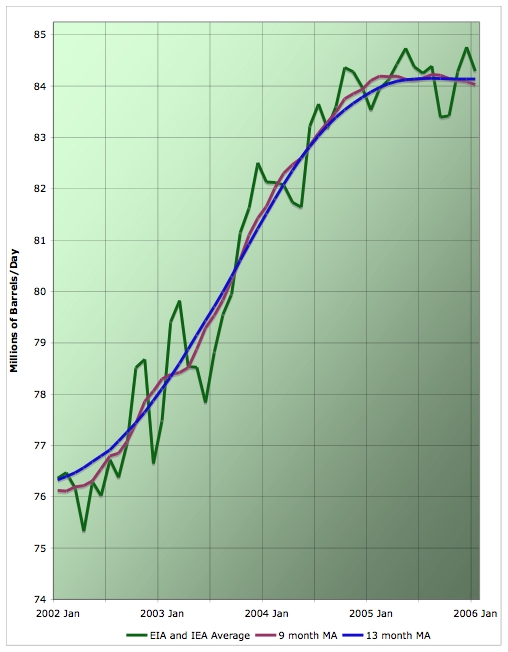A group of researchers from UC Berkeley have published a paper that tries to reconcile conflicting studies on the energy efficiency of using ethanol as a transportation fuel. From the press release:
The analysis, appearing in this week’s issue of Science, attempts to settle the ongoing debate over whether ethanol is a good substitute for gasoline and thus can help lessen the country’s reliance on foreign oil and support farmers in the bargain. The UC Berkeley study weighs these arguments against other studies claiming that it takes more energy to grow the corn to make ethanol than we get out of ethanol when we burn it.
The report concludes that ethanol from corn has a slightly positive energy return (that is, somewhat less fossil fuel is used to produce it than is produced), and conjectures that cellulosic ethanol would be a much bigger win.
The study neglects important costs such as displacement of food-crop land and erosion.
Additional environmental metrics are now being developed for biofuels, and a few have been applied to ethanol production, but several key issues remain unquantified, such as soil erosion and the conversion of forest to agriculture
The paper’s abstract:
To study the potential effects of increased biofuel use, we evaluated six representative analyses of fuel ethanol. Studies that reported negative net energy incorrectly ignored coproducts and used some obsolete data. All studies indicated that current corn ethanol technologies are much less petroleum-intensive than gasoline but have greenhouse gas emissions similar to those of gasoline. However, many important environmental effects of biofuel production are poorly understood. New metrics that measure specific resource inputs are developed, but further research into environmental metrics is needed. Nonetheless, it is already clear that large-scale use of ethanol for fuel will almost certainly require cellulosic technology.
Elsewhere, Gary Jones is unhappy about the paper:
Water use, biodiversity reduction, soil CO2 and methane emissions from cultivation and a host of other considerations are also glossed over, mainly by pointing to a future when the cellulose rather than just the starch component of plants can be used in a multi-step process that uses microorganisms to first turn the cellulose into starch so that other microorganism can turn the starch into ethanol. It is assumed that the ethanol yield will then be so great that any environmental or production costs will be insignificant in comparison. They also fail to consider other competing uses for the biomass or the resources consumed in its production, and switch back and forth between static views of present behaviors and dynamic futures when it favors their arguments. For example they say that there are “a billion tons of currently unused waste available for ethanol production”, but fail to note that these “unused wastes” are resources rapidly being discovered as their value rises. They aren’t wastes, they are resources that have had low values though that is changing.
The full paper is available on Science Magazine’s website (subscription required).
Related post: Corn-fed pork
